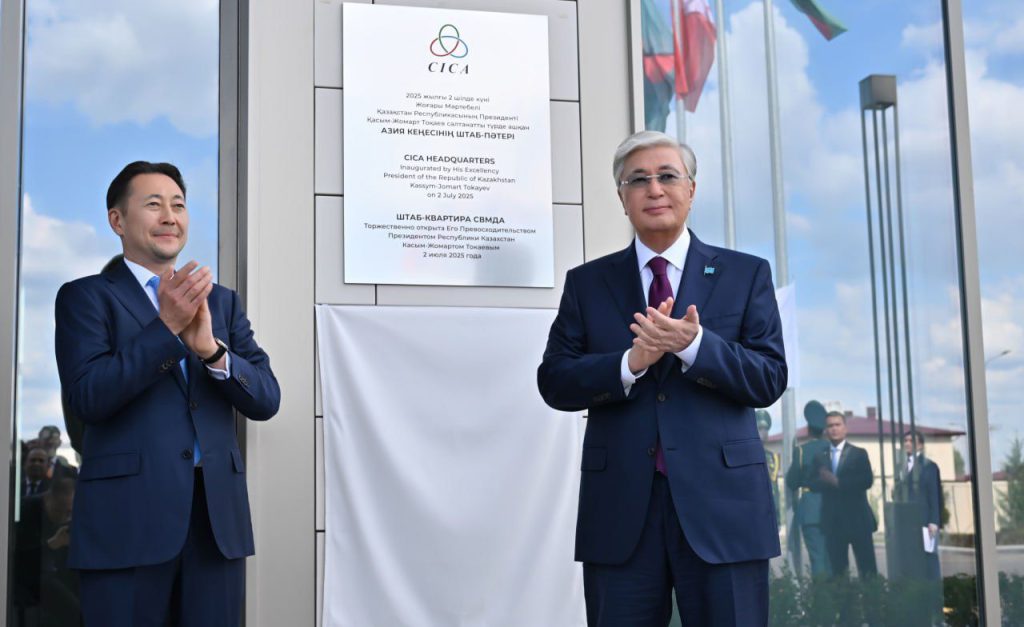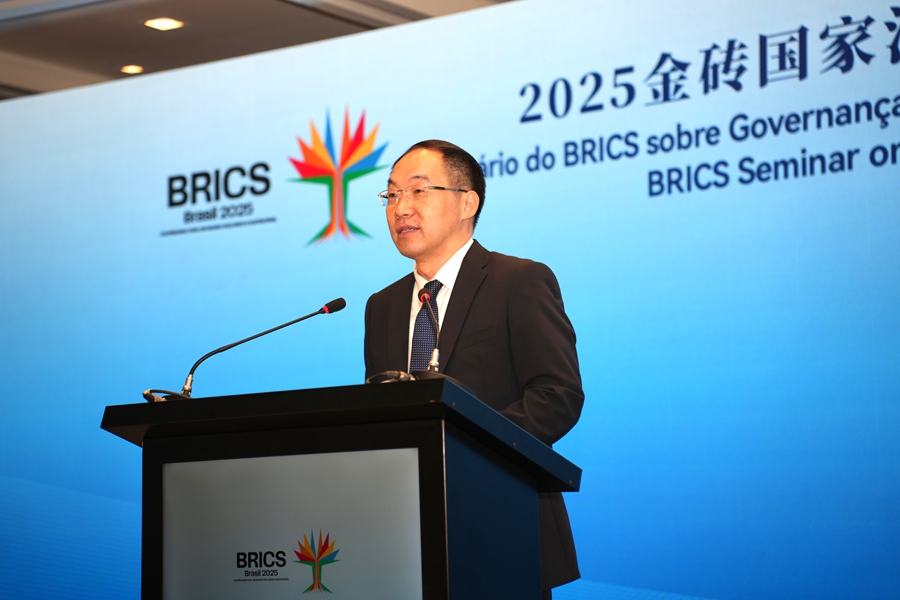Amid the accelerating transformation of the global political and economic architecture and the growing interdependence of states, the format of multilateral cooperation between China and the Central Asian countries is gaining particular significance. Today’s challenges — including geopolitical tensions, instability in trade flows, risks to energy and food security, as well as accelerated technological development — demand coordinated approaches and sustainable forms of engagement from the countries in the region.
The institutionalization of the “China–Central Asia” dialogue in Xi’an in 2023 represents not merely a diplomatic platform, but a foundation for building collective resilience. Against this background, the goal proclaimed in the final declaration — “building a closer China–Central Asia community with a shared future” (携手构建更加紧密的中国-中亚命运共同体) — affirmed the parties’ intention to formulate a joint agenda centered on resilience and collective security. Under these conditions, the multilateral format acts not only as an instrument of stability but also as a platform for constructing a new type of partnership based on the balance of interests.
The Republic of Kazakhstan plays a vital role in this process by actively promoting cooperative solutions. The country’s involvement in transnational infrastructure projects, participation in energy and digital integration, as well as its diplomatic mediation efforts, strengthens its role as a key actor in aligning interests. The significance of the multilateral approach has been emphasized repeatedly at the highest level. In particular, President Xi Jinping of China has described the format as one that reflects the spirit of the times and the aspirations of the peoples in the region, while President of Kazakhstan Kassym-Jomart Tokayev underlined its potential to consolidate efforts and expand dialogue. Thus, the development of sustainable mechanisms for regional partnership becomes an important tool for harmonizing interests and crafting collective decisions.
Key Areas for Strengthening Multilateral Cooperation
1. Ensuring regional security remains one of the top priorities.
Central Asia, located at the intersection of unstable zones, including Afghanistan, remains vulnerable to the risks of transnational terrorism, cybercrime, and drug trafficking. According to UNODC, the region’s role as a transit hub sustains the risk of organized crime spreading, and radical content is increasingly proliferating in the online space.
Against this background, it is necessary to institutionalize coordination in the security sphere based on mutual trust and joint capacity-building. The potential of the SCO Regional Anti-Terrorist Structure (RATS) in Tashkent could be expanded within the “China–Central Asia” format, focusing on intelligence sharing, joint scenario-based exercises, and rapid-response protocols. Given that China and Kazakhstan already hold regular consultations between security agencies, both countries could initiate multilateral trust protocols to ensure proactive resilience to threats.
2. Strengthening energy and infrastructure cooperation is equally significant.
Central Asia remains vulnerable to fluctuations in global energy prices and the restriction of export routes. At the same time, the countries demonstrate a high level of complementarity: the export of hydrocarbons from Kazakhstan, Uzbekistan, and Turkmenistan is matched by Chinese infrastructure investments, including the “Central Asia–China” gas pipeline, which has been delivering gas since 2009, and the “China–Kyrgyzstan–Uzbekistan” railway corridor — both serving as examples of strategic partnership in action.
Nonetheless, in order to reduce dependence on external price and logistics shocks, aligning energy strategies in the areas of renewables, hydrogen energy, and decarbonization is becoming increasingly important. To promote green development and climate resilience, China and Central Asian countries could initiate the creation of a joint fund or Alliance for Renewable Energy involving CNPC, the Silk Road Fund, national energy agencies, and investors. This would be a vital step in advancing ESG principles, including reliability and carbon neutrality.
3. Food security is gaining urgency amid climate change, supply chain disruptions, and mounting pressure on global agricultural markets.
Kazakhstan produces over 15 million tons of grain annually; Uzbekistan and Tajikistan are expanding fruit and vegetable exports; and China serves as both the region’s largest market and a key investor in its agricultural sector. However, the region lacks a coherent policy in this domain, which hampers the realization of integration potential. Under these circumstances, it is appropriate to transition to a multilateral model with harmonized standards and digital monitoring of supplies. China can offer digital solutions and logistics platforms, while Kazakhstan and Uzbekistan could serve as the core of an export-oriented agri-food hub. Additionally, it is in both sides’ interest to renew the agro-security dialogue, involving relevant ministries, research institutions, and business stakeholders, to coordinate standards, manage supply chains, and share agricultural data.
4. In the era of digital transformation and technological dependence, enhancing coordination in cybersecurity, artificial intelligence, and data protection becomes a strategic priority.
According to the ITU Global Cybersecurity Index 2024, many Central Asian countries show low levels of cybersecurity maturity, with uneven incident response mechanisms. China’s “Digital Silk Road” initiative opens opportunities to align strategies in addressing common challenges such as disinformation, deepfakes, cyberattacks, and data theft. However, inconsistencies remain in digital development strategies and AI regulation. In this regard, the foreign ministers’ meeting within the “China–Central Asia” format supported Tajikistan’s proposal to establish a Regional AI Center and mechanisms for AI self-regulation to develop response protocols for cyber incidents. There is also potential in creating joint research centers on AI and big data, as well as integrating a cloud-based platform with the participation of China Unicom and the “Digital Kazakhstan” initiative to ensure real-time data sharing in the face of emerging threats.
5. An additional key area for strengthening multilateral cooperation is the coordination of actions to promote environmental sustainability. According to UNEP, Central Asia loses around 4% of its GDP annually due to soil degradation caused by desertification, alongside rising climate risks and increasing water scarcity. Moreover, the region lacks a stable, coordinated system for managing transboundary water basins, including the Amu Darya and Syr Darya rivers — a factor that poses a risk of interstate tensions.
In this context, it is vital to launch joint mechanisms for early disaster warning, digital monitoring of resources, and the coordinated governance of shared water basins. Kazakhstan and Uzbekistan have already implemented several initiatives in this area, including the use of satellite data (such as “Tasqyn” and “Water from Space” employing KazEOSat-1/2 satellites) and digital water consumption monitoring systems at critical sites (e.g., “Blue Peace” and the “Zarafshan River Basin Dialogue”). These developments could be scaled up into a regional platform with China’s participation as a provider of environmental sensing and water-saving technologies.
Thus, developing harmonized strategies in the areas of security, energy, food, digital transformation, and ecology — based on principles of joint construction, sustainability, and high-quality development — forms a strong foundation for long-term partnership between China and the Central Asian countries in the spirit of a shared future community.
Prospects and Challenges of Cooperation
Despite its demonstrated momentum and high potential, the development of the multilateral format faces a number of challenges.
First, there remains a significant asymmetry in economic, digital, and institutional capacities between the participants. China possesses considerably greater resources, while Central Asian countries remain oriented toward external investment and institutional support.
Second, divergences in national priorities and regulatory frameworks in areas such as digital sovereignty, energy policy, and water governance hinder the creation of a unified agenda.
Third, the region remains vulnerable to external pressure and subject to potential geopolitical imbalances involving China, Russia, and the European Union — which calls for a carefully designed system of equal partnership.
Under these conditions, the shift from coordination to strategic planning becomes a promising direction. Developing roadmaps for key sectors and launching multi-level working groups can enhance the format’s resilience. In this regard, Kazakhstan — demonstrating a pragmatic approach and active diplomacy — can play the role of constructive moderator, ensuring the region’s adaptability to the turbulence of the global environment.
Strengthening multilateral cooperation between China and the Central Asian countries lays the groundwork for enhanced collective resilience in responding to cross-border challenges. Joint promotion of initiatives in the fields of security, energy, digitalization, food, and environmental sustainability reflects the principles of equal partnership and mutual benefit. In line with the concept of a shared future, the “China–Central Asia” format can become not only a coordination tool but also a catalyst for sustainable development across the Eurasian space.
China Studies Center


